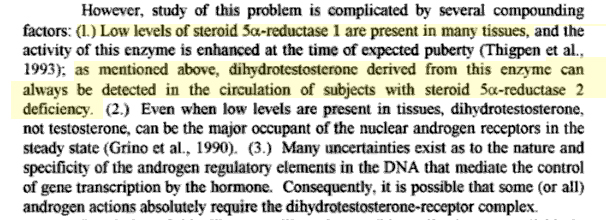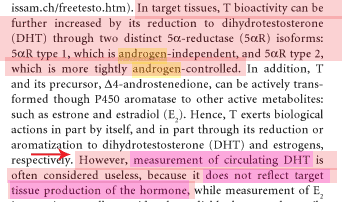According to emedicine.com/med/topic3489.htm , it is possible to test for 5AR activity via blood/urine test:
"In the pilosebaceous unit and peripheral tissues, DHT is metabolized further to 3a-androstanediol.
3a-androstanediol glucuronide, the final metabolite, can be measured in the plasma and indicates the level of activity of target tissue conversion of testosterone and androstenedione to DHT.
The relative activity of the 5a-reductase enzymes can be determined by measuring 3a-androstanediol glucuronide in either urine or blood."
3a-androstanediol glucuronide is also known as “Adiol-G”, and should be ordered as it is a metabolite of DHT and thus a more accurate representation of 5AR-II activity .
[Size=4]The following labs in the USA CAN TEST FOR 3a-diol G, here are the test #s:[/size]
ARUP LABS:
aruplab.com/guides/ug/tests/ … ronide.jsp
aruplab.com/guides/ug/tests/0078001.jsp
QUEST DIAGNOSTICS:
questdiagnostics.com/hcp/tes … abCode=SJC
More info on Adiol-G and 5AR: jcem.endojournals.org/cgi/reprint/76/4/977.pdf
Looks like the liver playes a big role, responsible for 90% of circulating Adiol-G. There is also a great diagram of 5AR metabolic pathways on page 2, with additional hormones one could test for.
Also note:
“Lobo et al. have demonstrated Adiol G production in genital skin and have shown that serum Adiol G levels correlate with skin 5a-reductase activity.”




